thunderheart
100 W
Original article: https://www.thunderheartreviews.com/2018/08/japanese-made-103450-li-ion-prismatic.html
I've tested two Japanese-made prismatic cells from Panasonic and Maxell. They both are 103450 cells but they are very different.
For those who prefer watching than reading I’ve made the video version of this test
[youtube]mpHqGTrrk28[/youtube]
The cells were bought from Queen Battery, a Chinese supplier of genuine batteries, who specializes mainly on EV and eBike market. Queen Battery has a branch in Europe, but they also work with customers from Americas, Russia, etc… They also have their own brand cells line and can build custom packs.
As always, I've tested with ZKETECH EBC-A20 and a self-made battery holder. It's a PC-connected battery tester supporting 4-wire measuring and discharging at up to 20A.

I've slightly upgraded my battery holder - i've replaced one of the terminal pads with a larger one and now i'm calling this "holder v2.5"
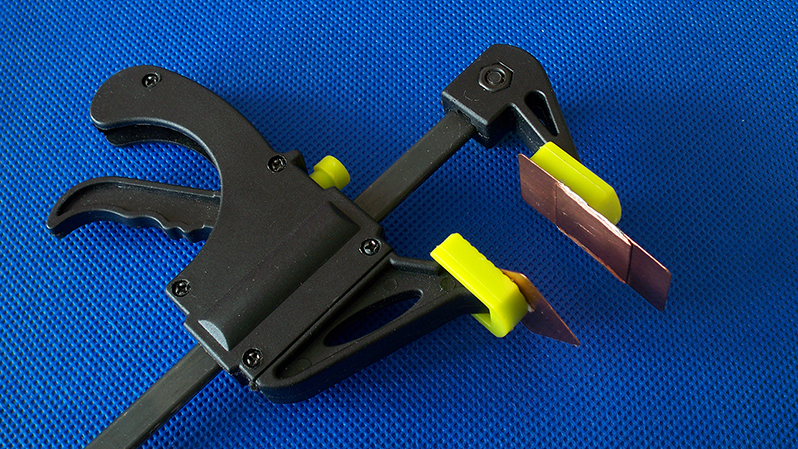
I've followed all the prescriptions of the IEC61960-2003 standard concerning battery's capacity measurement. Before each discharging cycle each battery was charged at standard current mentioned in its datasheet to charge end voltage (4.2 or 4.35V) (cut-off at 0.1A, which is the lowest supported by EBC-A20). Before each discharging or charging i've held a 1-1.5hrs pause. The environment temperature was 20-25°C.
Discharge cut-off voltage was 2.75V.
Panasonic NCA103450
This cell is marked Panasonic 6402 C NCA103450 6323W2W8B.
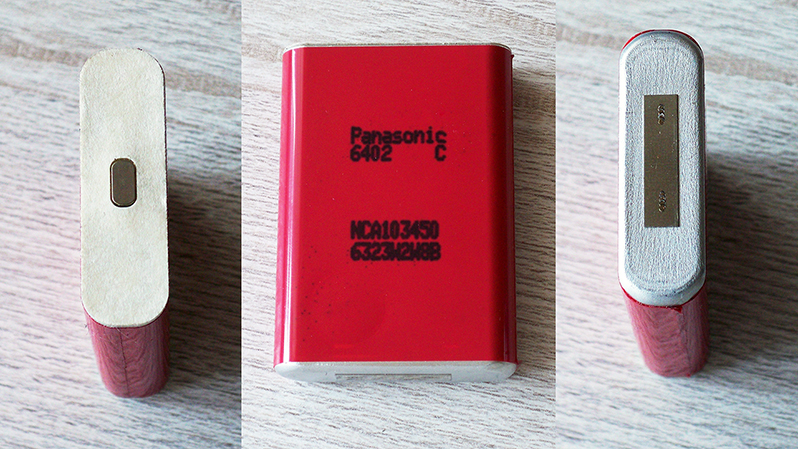
The main specs from its datasheet:
Rated capacity: 2200mAh at 0.44A discharge at 20ºC
Minimum capacity: 2270mAh at 0.454A / 25ºC
Typical capacity: 2350mAh
Nominal voltage: 3.6V
Max continuous discharge current: 4.54A (i've tested at 5A)
Discharge end voltage: 2.75V
Std charging current: 1.589A
Charge end voltage: 4.20V
Test results:

Great results at all three discharge rates. Look at the curve at 5A - it's almost linear. Maybe it could handle higher current but i think you'd better not to discharge it at >5A.
Maxell ICP103450AHR
This cell's marking is engraved on the metal case and is nearly visible. It's marked ICP 103450 AHR K2667 0717 HM MADE IN JAPAN K2.
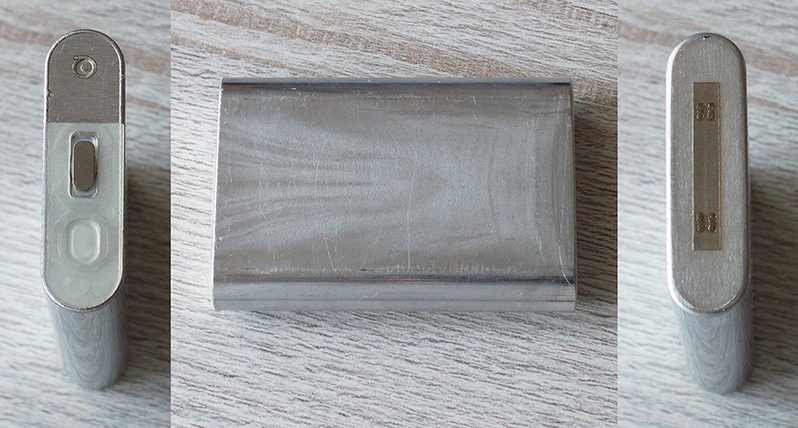
The main specs from its datasheet:
Rated capacity: 2160mAh at 0.432A at 25ºC
Nominal voltage: 3.8V
Max continuous discharge current: 3.24A
Discharge end voltage: 2.75V
Max charging current: 2.16A
Charge end voltage: 4.35V
Pay attention to the nominal and charge end voltages - 3.8 and 4.35V respectively. I've tested it both at 4.35V and 4.20V but let's look at the standard 4.35V test results:
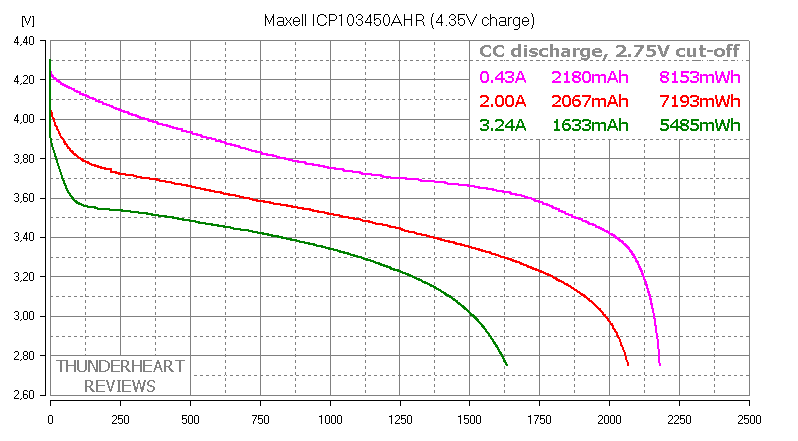
Good results at 0.2C/0.43A and 2A, but at 3.24A it doesn't look impressive.
Let's compare this cell's results at 4.35 and 4.20V charge modes:
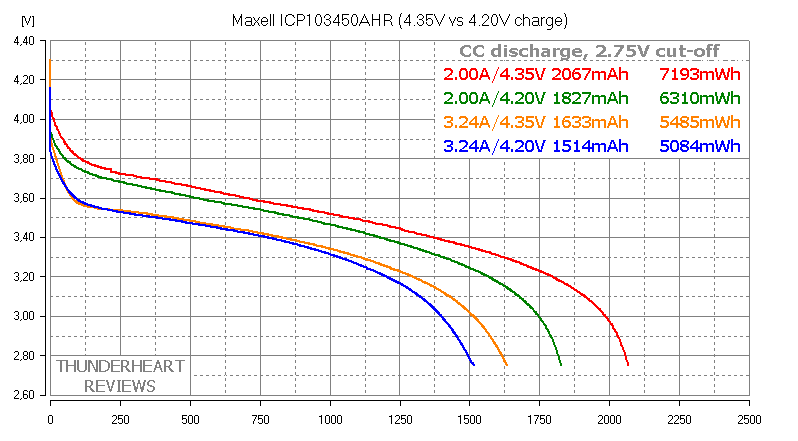
At 2A rate the difference is noticeable - about 900mWh, but at 3.24A it's only 400mWh.
Verdict
Panasonic NCA103450 is a great cell, there is no doubt, but Maxell has disappointed me. Even though it's a 3.8V high voltage cell, it is rated at lower capacity and lower max discharge rate. In 4.2V mode its results are even lower which makes it no rival for Panasonic.
I've tested bare cells (without protection PCB), but Queen Battery sells protected versions too. They also offer custom-built packs.
Check out my YouTube channel for batteries, chargers and other stuff reviews.
In my blog where you can find all my reviews in one place. Every new test/review is first published on YouTube and in the blog.
I've tested two Japanese-made prismatic cells from Panasonic and Maxell. They both are 103450 cells but they are very different.
For those who prefer watching than reading I’ve made the video version of this test
[youtube]mpHqGTrrk28[/youtube]
The cells were bought from Queen Battery, a Chinese supplier of genuine batteries, who specializes mainly on EV and eBike market. Queen Battery has a branch in Europe, but they also work with customers from Americas, Russia, etc… They also have their own brand cells line and can build custom packs.
As always, I've tested with ZKETECH EBC-A20 and a self-made battery holder. It's a PC-connected battery tester supporting 4-wire measuring and discharging at up to 20A.

I've slightly upgraded my battery holder - i've replaced one of the terminal pads with a larger one and now i'm calling this "holder v2.5"

I've followed all the prescriptions of the IEC61960-2003 standard concerning battery's capacity measurement. Before each discharging cycle each battery was charged at standard current mentioned in its datasheet to charge end voltage (4.2 or 4.35V) (cut-off at 0.1A, which is the lowest supported by EBC-A20). Before each discharging or charging i've held a 1-1.5hrs pause. The environment temperature was 20-25°C.
Discharge cut-off voltage was 2.75V.
Panasonic NCA103450
This cell is marked Panasonic 6402 C NCA103450 6323W2W8B.

The main specs from its datasheet:
Rated capacity: 2200mAh at 0.44A discharge at 20ºC
Minimum capacity: 2270mAh at 0.454A / 25ºC
Typical capacity: 2350mAh
Nominal voltage: 3.6V
Max continuous discharge current: 4.54A (i've tested at 5A)
Discharge end voltage: 2.75V
Std charging current: 1.589A
Charge end voltage: 4.20V
Test results:

Great results at all three discharge rates. Look at the curve at 5A - it's almost linear. Maybe it could handle higher current but i think you'd better not to discharge it at >5A.
Maxell ICP103450AHR
This cell's marking is engraved on the metal case and is nearly visible. It's marked ICP 103450 AHR K2667 0717 HM MADE IN JAPAN K2.

The main specs from its datasheet:
Rated capacity: 2160mAh at 0.432A at 25ºC
Nominal voltage: 3.8V
Max continuous discharge current: 3.24A
Discharge end voltage: 2.75V
Max charging current: 2.16A
Charge end voltage: 4.35V
Pay attention to the nominal and charge end voltages - 3.8 and 4.35V respectively. I've tested it both at 4.35V and 4.20V but let's look at the standard 4.35V test results:

Good results at 0.2C/0.43A and 2A, but at 3.24A it doesn't look impressive.
Let's compare this cell's results at 4.35 and 4.20V charge modes:

At 2A rate the difference is noticeable - about 900mWh, but at 3.24A it's only 400mWh.
Verdict
Panasonic NCA103450 is a great cell, there is no doubt, but Maxell has disappointed me. Even though it's a 3.8V high voltage cell, it is rated at lower capacity and lower max discharge rate. In 4.2V mode its results are even lower which makes it no rival for Panasonic.
I've tested bare cells (without protection PCB), but Queen Battery sells protected versions too. They also offer custom-built packs.
Check out my YouTube channel for batteries, chargers and other stuff reviews.
In my blog where you can find all my reviews in one place. Every new test/review is first published on YouTube and in the blog.

